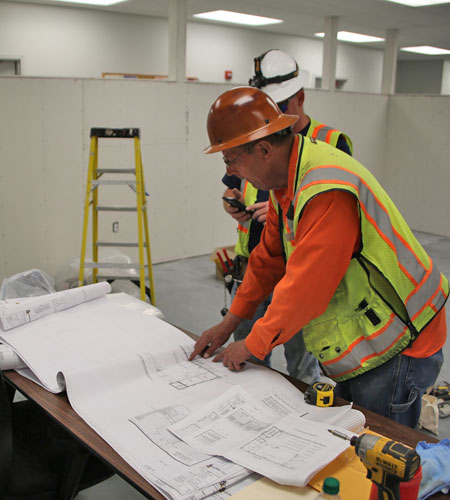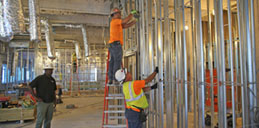What is Value Engineering and Why is it Important in Commercial Construction?
 Value engineering is a construction concept that originated during World War II when construction materials were scarce and costly. Enterprising engineers at General Electric realized that there were other materials that could be substituted that would not only result in a better-quality building, but at a much more affordable cost. This concept proved so successful it was quickly adopted by construction professionals around the globe and is now one of the most popular construction delivery methods. So, if your goal is to construct the best quality building at the lowest possible cost, commercial construction companies like NHCS, with experience in delivering value engineering can help you achieve that goal.
Value engineering is a construction concept that originated during World War II when construction materials were scarce and costly. Enterprising engineers at General Electric realized that there were other materials that could be substituted that would not only result in a better-quality building, but at a much more affordable cost. This concept proved so successful it was quickly adopted by construction professionals around the globe and is now one of the most popular construction delivery methods. So, if your goal is to construct the best quality building at the lowest possible cost, commercial construction companies like NHCS, with experience in delivering value engineering can help you achieve that goal.
Benefits of Value Engineering
There are a variety of benefits for using the value engineering delivery method for your commercial construction project. And one of the biggest benefits is cost savings without compromising quality or performance. Value engineering can save building owners and stakeholders up to 20% or more of the construction costs when compared to other delivery methods such as design-build, hard bid, and cost plus.
One of the hallmarks of value engineering is the sharing of creative ideas to identify alternate solutions for a better construction project. This often results in the procurement of higher quality, more durable materials and expedited project schedules. Construction projects that use value engineering have a lower risk for slippage, labor shortages and other project delays.
Maintaining high quality standards is the foundation for which value engineering is built. And building owners and stakeholders who want to ensure their commercial building is constructed with the highest quality standards will appreciate this value engineering principle.
 The cost and availability of labor is a risk most commercial construction projects face during one or more phases of the build. But since developing a systematic review of alternate solutions and cost validation are at its fundamental core, value engineering projects can find creative solutions without increasing construction costs to minimize the risk for these types of issues.
The cost and availability of labor is a risk most commercial construction projects face during one or more phases of the build. But since developing a systematic review of alternate solutions and cost validation are at its fundamental core, value engineering projects can find creative solutions without increasing construction costs to minimize the risk for these types of issues.
Value Engineering in Action
Let’s say that you want to construct a striking 5-story office building that will be a beacon of the community on a plot of land that you own. Your architect draws up the plans using the finest materials and calculates an estimated cost of $5,500,000 to complete the project. But you will be leasing space in the office building and want to maximize your revenue without being overpriced for the area.
When getting bids for your project, NHC recommends using the value engineering delivery method. Applying this method to your project reduces the estimated construction costs down to $4,500,000, saving you a cool $1 million or 20% of your original project estimate. This is achieved by recommending alternate building materials, techniques and other solutions that reduce the construction cost without sacrificing the quality of materials, performance or workmanship.





